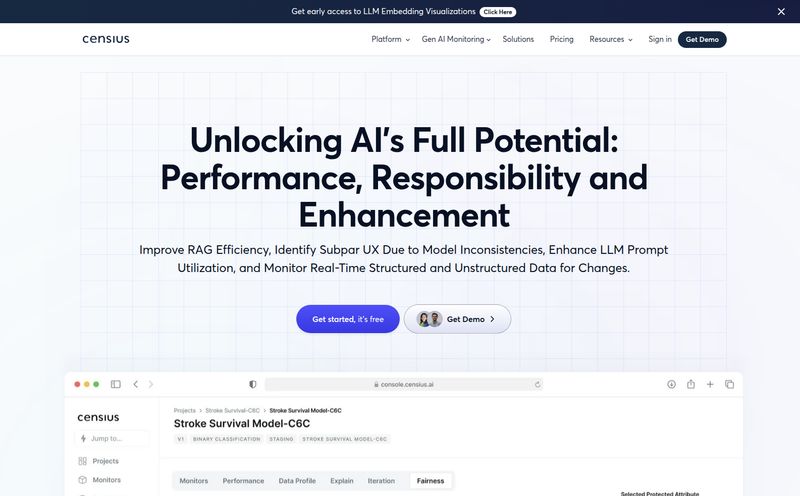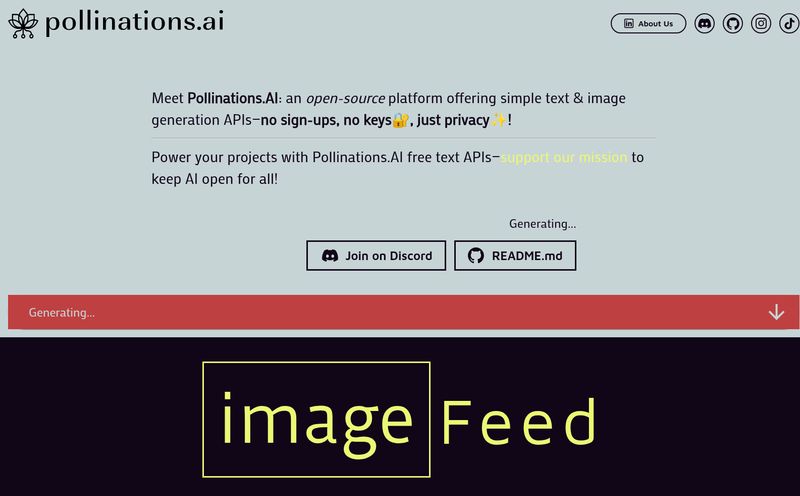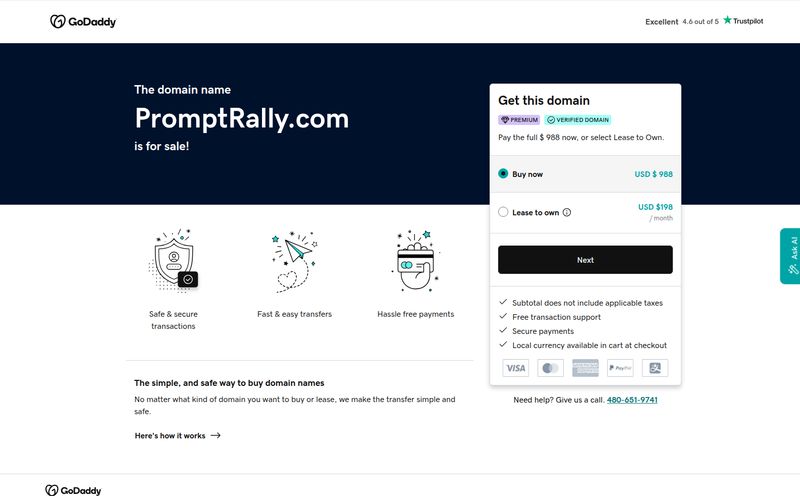If you're in the SEO or digital marketing space, your inbox and social feeds are probably a warzone right now. Every single day, there's a new "game-changing" AI tool that promises to write all your content, design your graphics, and probably even walk your dog. It’s a bit much, isn’t it? It feels like the Wild West all over again, a digital gold rush where everyone’s slinging code and hoping to strike it rich.
So, when I first heard about a tool called FlashGPT, my ears perked up. The name alone is brilliant marketing. “Flash.” It implies speed, efficiency, no messing around. Exactly what I need when I'm juggling three client reports, a keyword deep dive, and a half-written blog post (sound familiar?). The promise was simple: lightning-fast AI for instant answers. Sign me up, right?
But like many things in this AI boom, the story took an… unexpected turn. This isn't just a review; it's a bit of a detective story.
What Exactly Was FlashGPT Supposed to Be?
Before we get to the mystery, let's talk about the concept, because the idea behind FlashGPT is solid. At its core, it was designed to be a conversational AI experience. Think of it less like a rigid command-line tool and more like having a hyper-intelligent, incredibly fast research assistant sitting next to you. You ask a question in plain English, and bam, you get an intelligent, relevant answer back in a snap.
We're not just talking about asking "What's the capital of Nebraska?" We're talking about the kind of queries we run all day long:
- "Give me ten blog post titles about seasonal SEO for a small business."
- "Summarize the key points of this competitor's article."
- "Explain the concept of E-E-A-T like I'm five."
Getting instant, smart insights on stuff like that is the holy grail for productivity. It cuts down research time from hours to minutes, freeing us up to focus on strategy and the bigger picture. That was the dream FlashGPT was selling.

Visit FlashGPT
The Promised Land of Features
The feature list for FlashGPT read like my personal wishlist for an AI assistant. It was all about speed and intelligence. Let's be real, a slow AI is almost worse than no AI at all. If I have to wait 45 seconds for a paragraph to generate, I could have just written it myself. My brain isn't that slow. Yet.
FlashGPT's main pillars were supposedly:
Lightning-Fast Responses: This was its main selling point. In a world where deadlines are always yesterday, getting information instantly is a massive competitive advantage. It's the difference between jumping on a new trend and writing about it a week after everyone else has moved on.
Intelligent Insights: This is more than just spitting back information from Wikipedia. True AI insight means the tool can connect dots, understand context, and give you answers that aren't just correct but are also useful. For an SEO, that could mean generating a list of LSI keywords that are actually relevant, not just a random jumble of synonyms.
Rapid Solutions to Queries: This ties it all together. The goal wasn't just to be a chatbot, but a problem-solver. Stuck on a meta description? Need a quick outreach email template? A tool that provides rapid solutions becomes an indispensable part of your workflow.
The Good, The Bad, and The AI Model
Of course, no tool is perfect. Based on the initial specs, FlashGPT had the same potential highs and lows as any other AI platform out there. It’s important to see both sides of the coin.
The Upside
The pros were obvious. A simple, easy-to-use interface combined with speed is a killer combo. I’ve tested some incredibly powerful platforms with UIs so clunky they felt like they were designed in 1998. Nobody has time for a three-week learning curve. The idea of a streamlined, intuitive tool that just works is incredibly appealing.
The Inevitable Caveats
Now for the reality check. The information I found also pointed out a couple of cons, and they're the same ones that haunt the entire AI industry. First, accuracy depends on the quality of the AI model. This is the big one. An AI is only as smart as the data it was trained on and the architecture of its model. A tool built on an older or less sophisticated model might give you answers that are generic, outdated, or just plain wrong. It’s the difference between a seasoned expert and an overconfident intern.
Second, it was noted that it may not be suitable for complex or nuanced queries. I can personally attest to this with other tools. I once asked an AI to develop a complex internal linking strategy for a site with three different subdomains. The answer it gave was so fundamentally broken it was actually hilarious. These tools are fantastic for breadth and speed, but for deep, nuanced strategic work? You still need that human brain. For now.
The Hunt for FlashGPT: A Digital Detective Story
So, armed with all this information and a healthy dose of professional curiosity, I went to find FlashGPT. I was ready to sign up, kick the tires, and see if the speed lived up to the name. I navigated to where I thought its homepage would be, and I was met with… well, this:
404 NOT_FOUND
Code: `NOT_FOUND`
A 404 error. The digital equivalent of a vacant lot where a shiny new building was supposed to be. I tried a few different URLs. I searched product directories. Nothing. It seems FlashGPT, for all its promised speed, has vanished from the web.
What does this mean? In the fast-moving world of AI startups, it could mean anything. Maybe the project ran out of funding. Perhaps it was a beta that has since closed. It could have been acquired and absorbed into another company, or maybe it’s undergoing a rebrand. It’s a stark reminder of how volatile this space is. Tools can appear and disappear in teh blink of an eye.
Pricing: The Sound of Silence
Unsurprisingly, with a 404 error on the front door, finding a pricing page was impossible. This lack of information only deepens the mystery. Was it going to be a free tool? A freemium model with a pro tier? Or a full-blown subscription service competing with the likes of ChatGPT Plus or Claude Pro?
My money would have been on a tiered subscription model. Something like a free plan with limited queries and a $20/month plan for unlimited access and advanced features. That seems to be the standard playbook right now. But without a live site, it's all just speculation.
Is FlashGPT a Ghost? And What Does That Mean for You?
So, the big question: is FlashGPT a ghost? For now, it seems so. And that brings us to a more important point than the review of any single tool. The AI landscape today is incredibly frothy. Some might even call it a bubble. For every stable, well-funded platform like Perplexity, there are a hundred FlashGPTs that show up with a great landing page and then fade away.
My advice? Don't build your entire workflow around a single, brand-new AI tool. Play with them, experiment, see what works. But always have a backup plan. Your core skills—strategy, critical thinking, good writing—are more valuable than ever. The tools are just there to augment those skills, not replace them. Stay curious, but also stay critical.
Frequently Asked Questions about FlashGPT and AI Tools
What was FlashGPT?
FlashGPT was marketed as an AI-powered tool designed to provide extremely fast and intelligent answers to user queries through a conversational interface. Its main focus was on speed and efficiency for tasks like research, content ideation, and problem-solving.
Is FlashGPT still available?
Based on our research in late 2024, the tool appears to be unavailable, with its website leading to a 404 error. It's possible it has been discontinued, rebranded, or is temporarily offline, but it is not currently accessible to the public.
Why are fast response times important for an AI tool?
Speed is critical for productivity. A fast AI allows for a more natural, conversational flow, preventing disruptions to your thought process. For professionals in fields like SEO and marketing, quick turnarounds on research and content generation can mean the difference between capitalizing on a trend or missing it.
What's a good alternative to FlashGPT?
There are several excellent and stable alternatives. For general-purpose conversation and content creation, OpenAI's ChatGPT and Anthropic's Claude are industry leaders. For research and answers with cited sources, Perplexity AI is a fantastic option.
How can I check if an AI tool is reliable before using it?
Look for signs of an active, healthy project. Check for recent blog posts or updates, an active social media presence, and clear information about the team or company behind it. Look for reviews on independent sites and see if they have transparent pricing and a clear privacy policy. If it all looks a bit thin, proceed with caution.
The Lesson from the Flash
In the end, the story of FlashGPT is a perfect little parable for our current moment in tech. It represents the immense promise and the chaotic, fleeting nature of the AI boom. The idea was great. The branding was smart. The execution… well, that remains a mystery.
Don't let stories like this make you cynical, though. Let them make you smart. The pace of innovation is breathtaking, and for every tool that vanishes, five more appear, each pushing the boundaries just a little bit further. The key is to be an informed explorer. Keep your eyes open, test everything, but build your foundation on solid ground. The ghosts of the AI graveyard can teach us valuable lessons, and the lesson from FlashGPT is simple: speed is great, but staying power is what really matters.
Reference and Sources
- OpenAI's ChatGPT - A leading conversational AI model.
- Anthropic's Claude - A strong competitor in the AI assistant space.
- Perplexity AI - An AI-powered search engine that provides answers with citations.
- TechCrunch Article on AI Bubble Concerns - For further reading on the current state of the AI industry.



